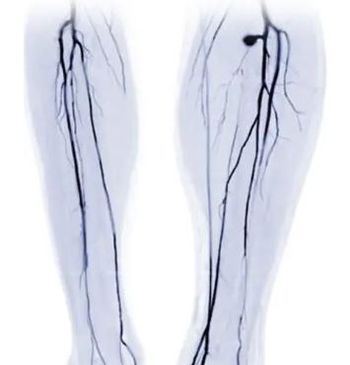
Natrecor Linked to Early Deaths in Acute Decompensated Heart Failure
ANN ARBOR, Mich. -- Natrecor (nesiritide) is associated with a significant increase in early mortality in patients with acute decompensated heart failure, even when the drug is used at recommended doses, according to investigators here.
ANN ARBOR, Mich., Sept. 26 -- Natrecor (nesiritide) is associated with a significant increase in early mortality in patients with acute decompensated heart failure, even when the drug is used at recommended starting doses.
So found a pooled analysis of three controlled trials updated with new mortality data showing that patients with acute decompensated heart failure who received Natrecor had a nearly twofold greater risk for 30-day mortality than patients who received control therapy.
"We believe that this revised analysis represents the most accurate estimate of the mortality risk associated with nesiritide use in acutely decompensated heart failure reported," reported Keith D. Aaronson, M.D., M.S., of the University of Michigan here, and Jonathan Sackner-Bernstein, M.D., of Clinilabs, Inc. in New York.
"It suggests an association between nesiritide and increased risk of death within 30 days of its use, even at the recommended starting dose," they wrote in a research letter in the Sept. 27 issue of the Journal of the American Medical Association.
The authors last year published, also in JAMA, a pooled analysis suggesting that Natrecor, a potent vasodilator, was associated with an elevated risk of 30-day mortality compared with non-inotrope-based control therapy, but the risk in that analysis was not statistically significantly.
That analysis included data from the Nesiritide Study Group Efficacy Trial (NSGET), the Vasodilation in the Management of Acute Congestive Heart Failure (VMAC) study, and the Prospective Randomized Outcomes Study of Acutely Decompensated Congestive Heart Failure Treated Initially in Outpatients With Natrecor (PROACTION) study.
Since the original meta-analysis was published, Scios Inc., the company that markets Natrecor, identified two additional deaths occurring within 30 days of treatment in the PROACTION trial, both in patients randomized to Natrecor.
Dr. Aaronson and Dr. Sackner-Bernstein added the two deaths to their original data set, repeated the analysis, and also performed an analysis limited to the VMAC study and PROACTION, the two trials that used the currently recommended starting dose of Natrecor.
They calculated risk ratios for the crude risk of death at 30 days, and performed a meta-analysis to determine the risk of death after evaluating for interstudy heterogeneity by the Breslow-Day test.
Because there was no significant evidence of heterogeneity, they created fixed-effects models using the Mantel-Haenszel method. When they could not determine the dates of deaths from available data, they assumed (in favor of Natrecor) that 30-day deaths occurred at the latest possible time for Natrecor, and at the earliest possible time for controls.
A total of 485 patients were randomized to Natrecor and 377 to control therapy in the three trials. In the analysis that included only the VMAC and PROACTION studies, there were 400 patients randomized to Natrecor and 335 to control therapy. In all, 11 (2%) of patients randomized to Natrecor and two (0.5%) of controls were lost to follow-up within 30 days.
The investigators found that in the analysis of all three studies combined, the crude mortality rate at 30 days was 7.6% for the Natrecor groups and 4.0% for the control groups. For the combined VMAC and PROACTION studies, the mortality rate was 7.8% for Natrecor and 3.9% for control. When they added in the two deaths that were reported since the original meta-analysis, they found that the deaths slightly increased the hazard ratios and decreased the corresponding P values to less than 0.05.
In the new analysis, the relative risk for death within 30 days for the fixed-effects model adjusted for study was 1.86 (95% confidence interval, 1.05-3.27, P=0.03) for all three studies. Using a proportional hazards model, the corresponding hazard ratio adjusted for study was 1.93 (95% CI, 1.06-3.52, P=0.03).
When the authors restricted the analysis to the trials using the current recommended starting dose (VAMC and PROACTION), they found that Natrecor use was still associated with a significant increase in the risk of death within 30 days in both the fixed-effects model (relative risk, 1.93, 95% CI, 1.05-3.54, P=0.04) and multivariable Cox model (hazard ratio, 2.00, 95% CI, 1.05-3.83, P=0.04), adjusted for study.
The investigators acknowledged that the studies used in their meta-analyses were not designed to look for an association between Natrecor and death, and complete data on the use of additional medications or procedures through follow-up were not available. Additionally, there may have been unmeasured confounders contributed to the differences between Natecor and controls, they wrote.
"However, all three of these studies did prospectively plan to monitor for the risk of death subsequent to the administration of study medication," they noted. "Greater certainty about this risk can only come from a double-blind, placebo-controlled, randomized clinical trial adequately powered to assess mortality in patients with acutely decompensated heart failure receiving optimal background therapy."
The authors added that "current data support reserving clinical use of nesiritide in acutely decompensated heart failure to situations in which diuretics and nitrates have proven inadequate."
In addition to their findings linking Natrecor to early deaths, they also previously reported in Circulation in 2005 results of a different meta-analysis. This showed that even low doses of Natrecor significantly increased the risk of worsening renal function, compared with diuretics or other vasodilators, as measured by an increase in serum creatinine > 0.5 mg/dL at any point in the trials.
Dr Sackner-Bernstein reported being a full-time employee of Clinilabs Inc, a privately held clinical trials organization focused on performance of clinical trials and related services for pharmaceutical and medical device companies; and owning stock in Johnson & Johnson in custodial accounts with two of his children. Dr Aaronson reported no disclosures.
Newsletter
Enhance your clinical practice with the Patient Care newsletter, offering the latest evidence-based guidelines, diagnostic insights, and treatment strategies for primary care physicians.

































































































































































































































































































